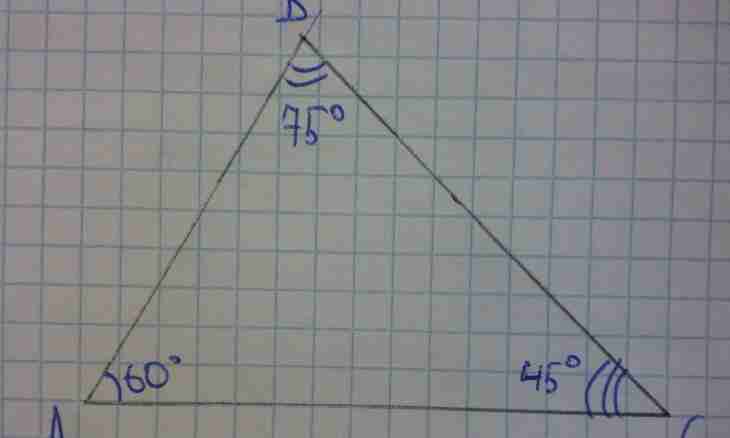The flat triangle in Euclidean geometry is made by three corners formed by its parties. Sizes of these corners can be calculated in several ways. Owing to the fact that a triangle - one of the simplest figures, there are simple formulas of calculation which even more become simpler if to apply them to the regular and symmetric polygons of this sort.
Instruction
1. If sizes of two corners of any triangle are known (β and γ), then the size of the third (α) can be determined proceeding from the theorem of the sum of corners in a triangle. It says that this sum is always equal in Euclidean geometry 180 °. That is for finding of the only unknown corner in tops of a triangle take away from 180 ° sizes of two known corners: α=180 °-β-γ.
2. If it is about a rectangular triangle, then for finding of size of an unknown acute angle (α) it is enough to know the size of other acute angle (β). As the corner lying opposite to a hypotenuse is always equal in such triangle 90 °, for finding of size of an unknown corner take away from 90 ° the size of the known corner: α=90 °-β.
3. In an isosceles triangle it is enough to know the size of one of corners too to find two others. If the corner (γ) between the parties of equal length is known, then for calculation of both other corners find a half from a difference between 180 ° and the size of the known corner - these corners will be equal in an isosceles triangle: α=β= (180 °-γ)/2. From this follows that if the size of one of equal corners is known, then the corner between the equal parties can be defined as a difference between 180 ° and the doubled size of the known corner: γ=180 °-2*α.
4. If lengths of three parties are known (A, B, C) in any triangle, it is possible to find the size of a corner according to the theorem of cosines. For example, a cosine of the angle (β), B lying opposite to the party, it is possible to express as the sum of the squared lengths of the parties of A and C reduced by the squared length of the party of B and divided into the doubled work of lengths of the parties of A and C: cos(β)= (A²+C²-B²) / (2*A*C). And to find corner size, knowing what its cosine is equal, it is necessary to find its ark-function, that is an arccosine. Means β=arccos ((A²+C²-B²) / (2*A*C)). It is possible to find a similar way sizes of the corners lying opposite to other parties in this triangle.

